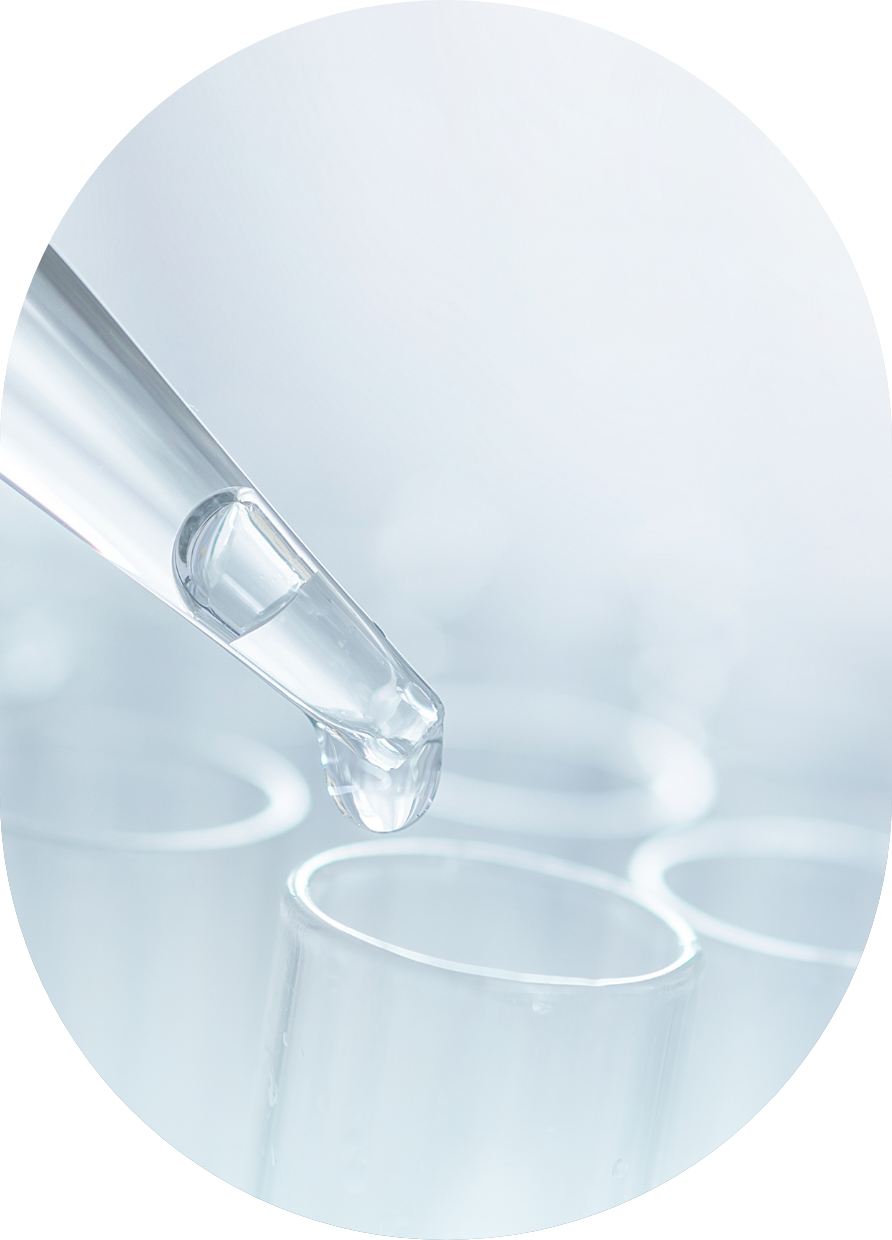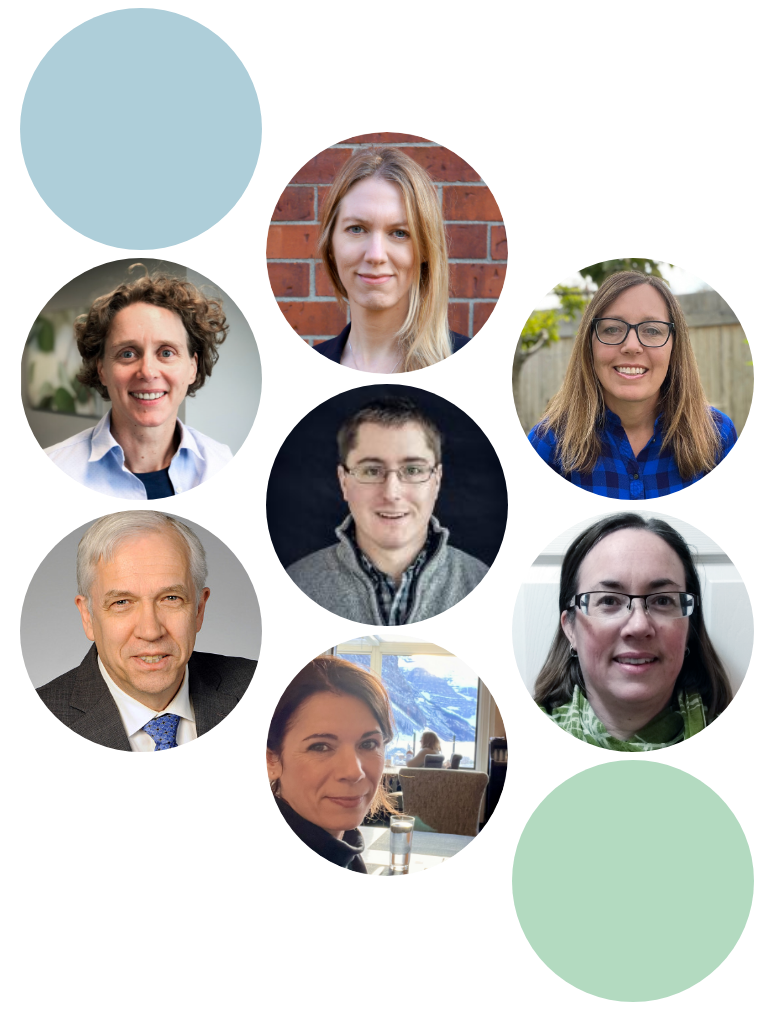
What is the
MIREC Study?
The Maternal-Infant Research on Environmental Chemicals (MIREC) Study is a research initiative conducted in Canada. It focuses on investigating the potential health effects of environmental chemicals on pregnant women and their children.

From 2008-2011, the MIREC Study enrolled a large cohort of pregnant women from ten sites across Canada. The purpose of the study was to measure the extent to which pregnant women and their babies are exposed to common environmental chemicals, as well as the beneficial elements in maternal milk. We followed them at each trimester, at birth and up to 2 months after delivery, collecting a wealth of data through questionnaires, biospecimens and physical measurements.
We have since conducted many follow-up studies of the MIREC children and mothers, the original MIREC Study becoming the foundation of what we now call the MIREC Research Platform. The list of follow-up studies is ever-growing, as we study various aspects of the MIREC children’s and mother’s health over time. The ongoing participation in MIREC research by our study participants continues to add to the depth of the MIREC Research Platform.
What is a biospecimen?
Biospecimens are blood, urine or other tissues and fluids collected and analyzed for research purposes. Biospecimens can also be stored in a Biobank for future research.
How are we exposed to environmental chemicals?
Canadians are exposed to chemicals every day in their environment, typically through food, water, air and consumer products.
Why are the MIREC
studies important?
Our goal is to improve the health of mothers and children by sharing the knowledge we have gained with researchers and policy makers throughout Canada and around the world. MIREC studies contribute to scientific understanding, public health interventions, and policy decisions that can protect the health and well-being of people living in Canada.
Vulnerable populations |
|
Developing fetuses and babies are more vulnerable to the adverse effects of chemical exposure because their brains and organ systems are not fully developed and they are growing rapidly. Pregnant women are also vulnerable to the adverse effects of chemical exposure due to changes in their bodies during pregnancy. Exposure to chemicals in early life and during pregnancy can have long-lasting health effects, and we need to better understand these effects. |
Maternal and child health outcomes |
|
MIREC is one of the few sources of data on negative health outcomes in mothers and children living in Canada. Our research provides valuable insights into potential risks and protective factors. This information can help healthcare providers to understand risk factors and guide their patients in making decisions about their health. |
Evidence-based policies and guidelines |
|
MIREC has measured chemicals identified by the Government of Canada as priorities. The findings of the MIREC studies contribute to the scientific evidence that is used for developing policies, guidelines, and regulations related to various types of environmental chemicals. |
Longitudinal perspective |
|
The MIREC Research Platform has followed our cohort of nearly 2000 women and their children since 2008, collecting data at multiple time points, from pregnancy to birth, in early childhood, and now into the adolescence of the MIREC children. We are now also studying the MIREC mothers as they reach perimenopause. MIREC has collected over 300 biomarkers of chemical exposures and nutritional status. Our extensive collection of biomonitoring data continues to grow with each follow-up study, which allows researchers to pivot efficiently to address new or emerging chemical concerns. |
Important scientific research |
|
Thanks to the wealth of data that our MIREC participants have provided, we have been able to publish over 135 scientific articles in peer-reviewed journals detailing our findings. And there are so many more to come, as over a hundred researchers and trainees are dedicated to analyzing the valuable data our participants have provided! |
Discover the MIREC
follow-up studies
MIREC-ID, which stands for Infant Development, was the initial follow-up study targeting infants at birth and 6 months of age. We enrolled 525 MIREC families from 6 of our study sites.
The purpose of MIREC-ID was to evaluate whether prenatal exposure to environmental chemicals had any measurable effect on the infant’s growth, general development and behaviour at 6 months.
MIREC-CD Plus, which stands for Child Development, focused on mothers and their MIREC toddlers from age 2 to 5. We enrolled 898 MIREC families from 6 of our study sites.
MIREC-CD Plus included a biomonitoring and a neurodevelopmental component. The purpose was to assess the potential links between environmental chemical exposures and child development, growth and behaviour.
What is biomonitoring?
Biomonitoring is the measurement of chemicals in fluids and tissues from living things.
What is neurodevelopment?
Neurodevelopment is a term that describes how neurological connections and pathways are formed in the brain. These pathways are responsible for memory, attention, social skills, and other aspects of brain development such as how we learn.
MIREC-ENDO is a 3-phase follow-up of the MIREC children, from 7 to 15 years old. ENDO stands for endocrine, the biological system in our bodies that secretes hormones into the bloodstream to regulate growth and development. The overall goal of this 3-phase study is to understand how prenatal exposure to environmental chemicals may influence the timing of when children go through puberty. We are also measuring how children grow and develop throughout adolescence.
All children go through puberty at different ages and develop at different rates. The three phases and long time frame for MIREC-ENDO will allow us to capture this variability in the timing of puberty and growth.
In MIREC-ENDO we also want to understand how complications and exposure to environmental chemicals during pregnancy may influence long-term maternal health.
The MIREC Biobank
2008-present
The MIREC Biobank was created at the beginning of the MIREC study and has grown with each follow-up study. The Biobank stores all the data and biospecimens (blood, urine, hair, milk, etc.) collected from consenting participants since the inception of MIREC.
The value of the MIREC Biobank continues to grow over time as new data and biospecimens are added. Researchers can use these data and biospecimens to answer new research questions and measure new chemicals.
Through a strictly controlled scientific application process, researchers can request access to data and biospecimens from the Biobank to explore new research questions on the health of mothers and their children.


The MIREC
Scientific Team
The MIREC scientific team consists of researchers from Health Canada as well as from leading Canadian institutions
This core team designs the MIREC follow-up studies, and oversees their implementation, with the objective of understanding levels of exposure to environmental chemicals, and possible health effects on the mothers and their children as they grow up. They work with the MIREC sites across Canada to ensure participant biospecimens, physical measurements and questionnaires are collected according to the highest standards.
MIREC Research Platform
Sites Participation
The original MIREC study included 10 study sites across Canada. Many of these sites have been involved in the MIREC follow-up studies, leading to a wealth of data from various geographical locations.
Vancouver |
|
The one and only study site in British Columbia is at the BC Children’s and Women’s Health institute in Vancouver. The original MIREC study recruited 162 mothers from this site. The Vancouver site has been involved in every follow-up study since MIREC. |
Edmonton |
|
Our northern-most study site is at the University of Alberta, in Edmonton. The original MIREC study recruited 20 mothers from this site. The Edmonton site has been involved in two follow-up studies (MIREC-CD Plus and MIREC-ENDO). |
Winnipeg |
|
Our Manitoba site was originally held at the St. Boniface General Hospital but has since moved to the Children's Hospital Research Institute of Manitoba. The original MIREC study recruited 90 mothers from this site. The Winnipeg site has been involved in two follow-up studies (MIREC-CD Plus and MIREC-ENDO). |
Toronto |
|
Toronto is the largest of five Ontario based sites. The Toronto site was originally located at Mount Sinai Hospital, then moved to Sunnybrook Health Sciences Center and is now located at the Princess Margaret Cancer Centre. The original MIREC study recruited 325 mothers from this site. The Toronto site has been involved in two follow-up studies (MIREC-CD Plus and MIREC-ENDO). |
Hamilton |
|
Hamilton is another Ontario based site, held at McMaster University. The original MIREC study recruited 275 mothers from this site. The Hamilton site has been involved in every follow-up study since MIREC. |
Sudbury |
|
The northern-most Ontario site was initially held at the Sudbury General Hospital but has since moved to Medicor Research Inc. The original MIREC study recruited 130 mothers from this site. The Sudbury site has been involved in two follow-up studies (MIREC-CD Plus and MIREC-ENDO). |
Kingston |
|
The Kingston site is held at the Kingston General Hospital. The original MIREC study recruited 255 mothers from this site. The Kingston site has been involved in every follow-up study since MIREC. |
Ottawa |
|
Ottawa is home to our eastern-most Ontario site and was originally located at the Ottawa Hospital Research Institute, but has since transitioned to the Children’s Hospital of Eastern Ontario (CHEO). The original MIREC study recruited 119 mothers from this site. The Ottawa site has been involved in every follow-up study since MIREC. |
Montréal |
|
Our Québec site is located at the Centre de recherche Azrieli du CHU Sainte-Justine, as well as the Jewish General Hospital in Montreal. Centre de recherche Azrieli du CHU Ste-Justine is also home to the MIREC Coordinating Center and the MIREC Biobank. The original MIREC study recruited 325 mothers from this site. The Montreal site has been involved in every follow-up study since MIREC. |
Halifax |
|
Our eastern-most study site is at the IWK Health Centre in Halifax, Nova Scotia. The original MIREC study recruited 300 mothers from this site. The Halifax site has been involved in every follow-up study since MIREC. |
MIREC Année all rights reserved - Privacy policy
Website by Riposte


